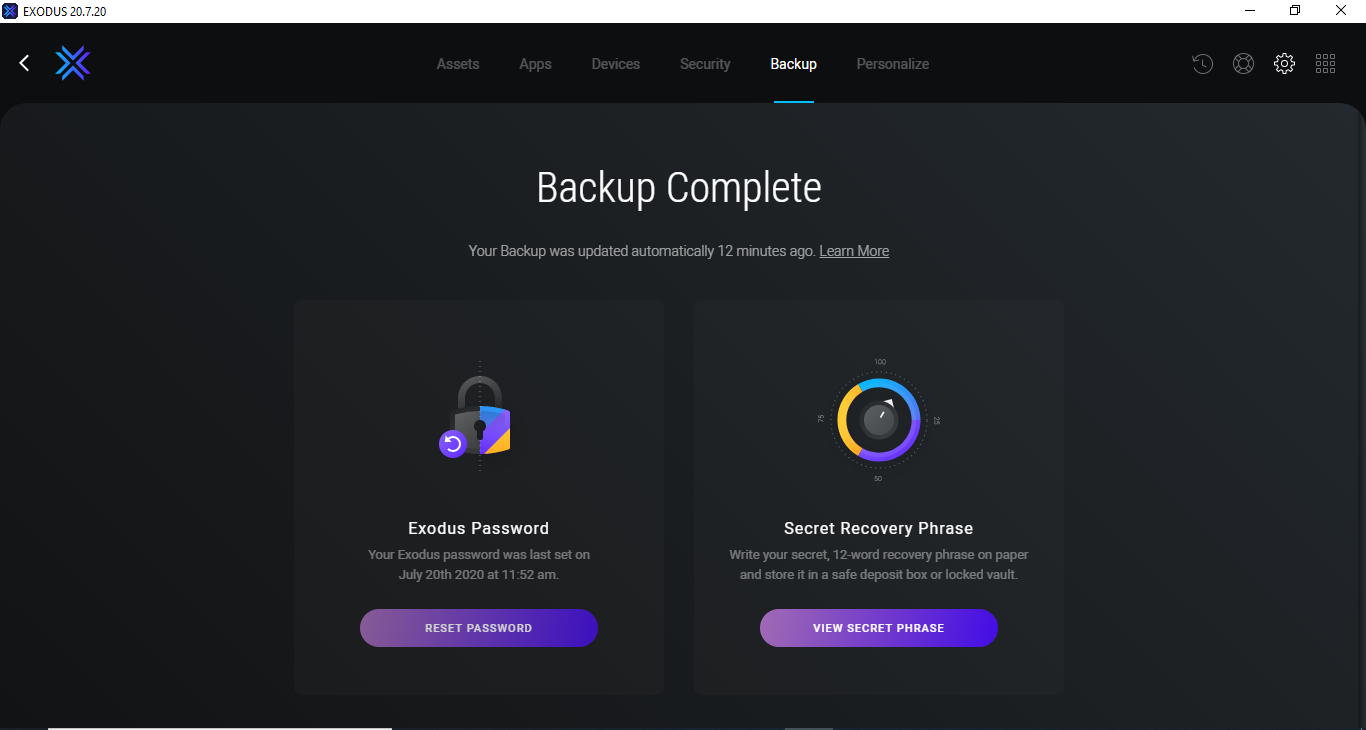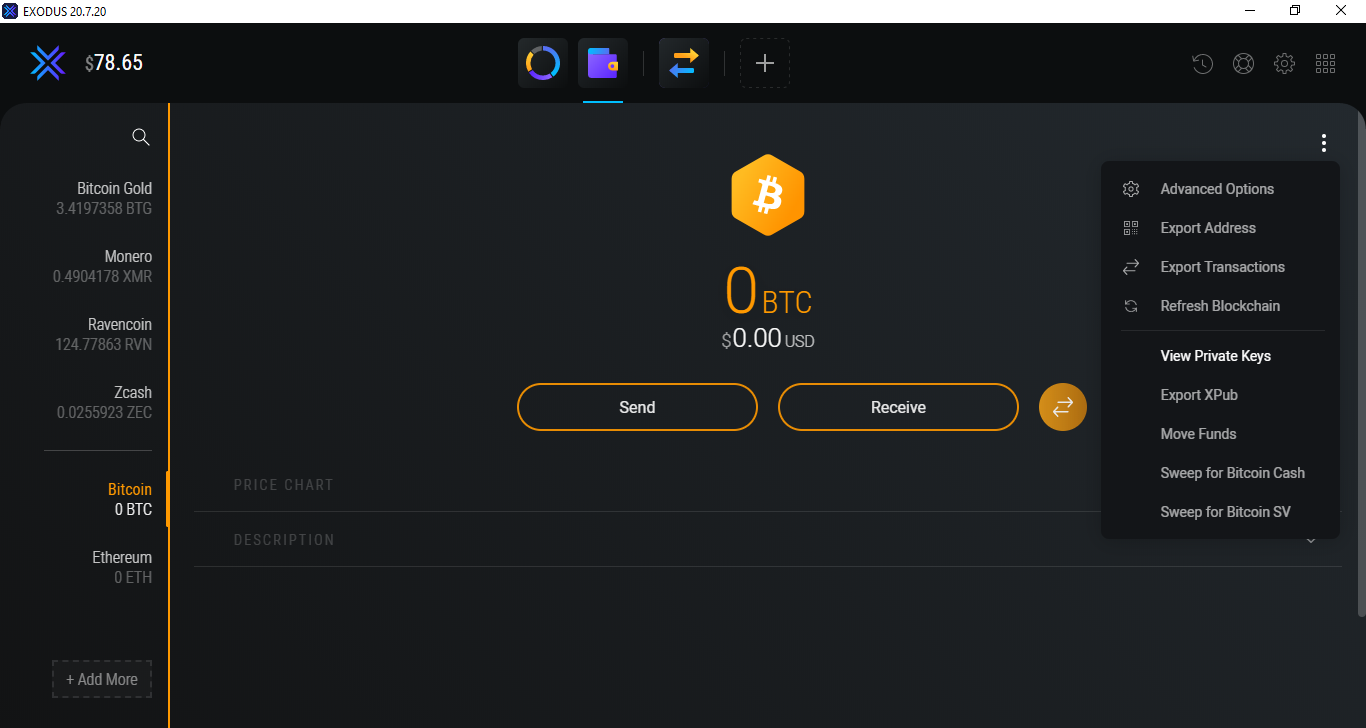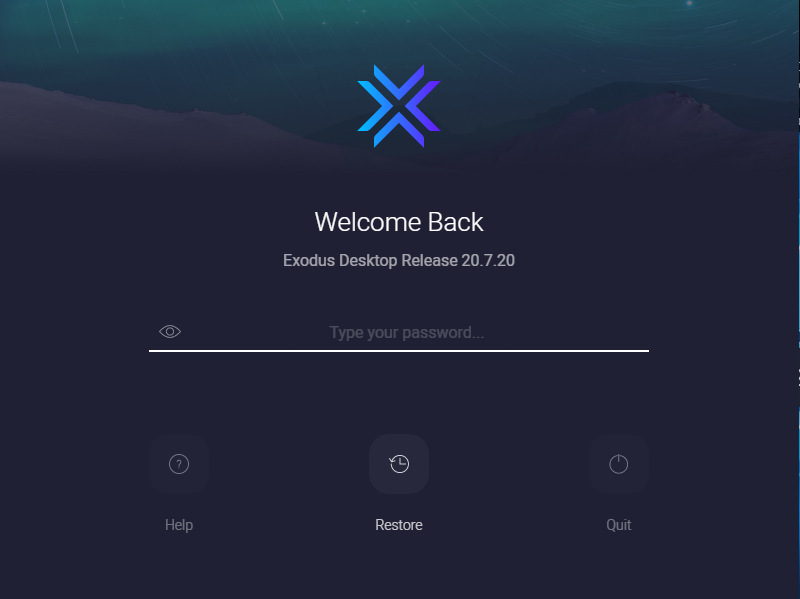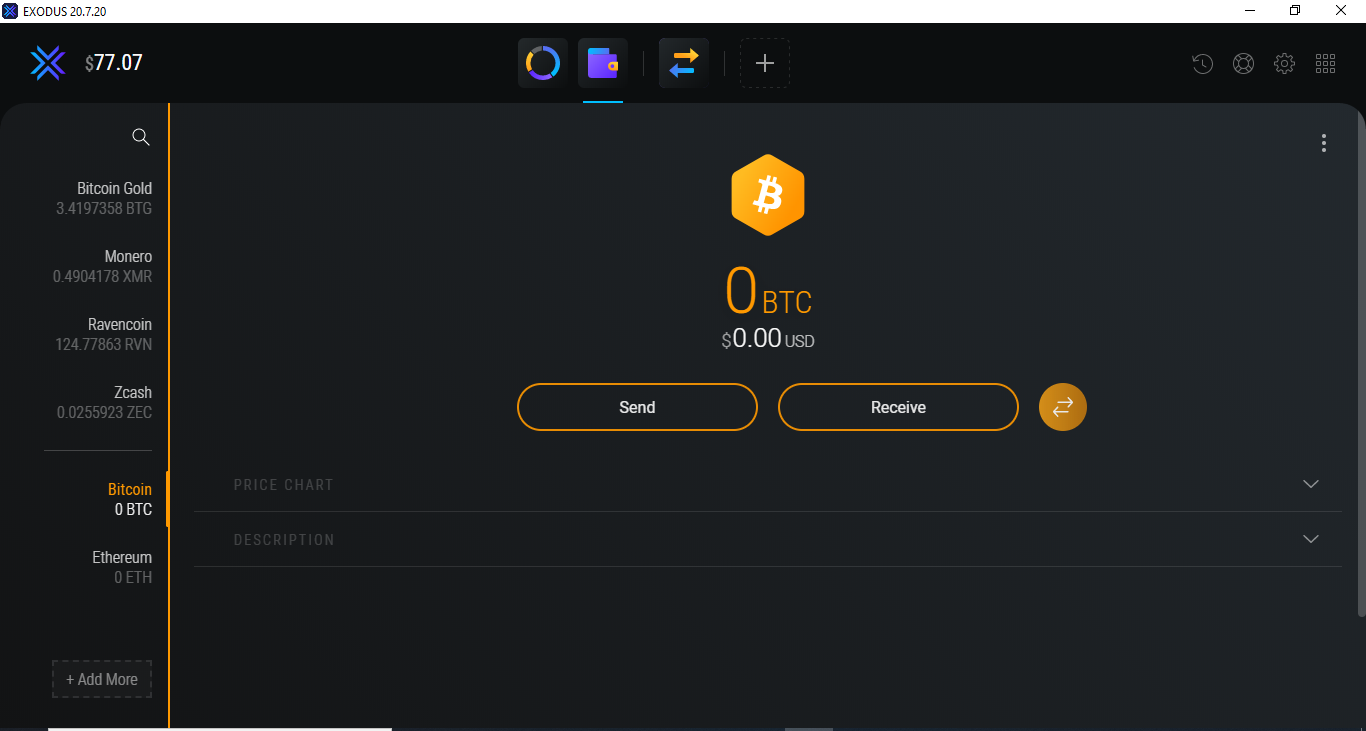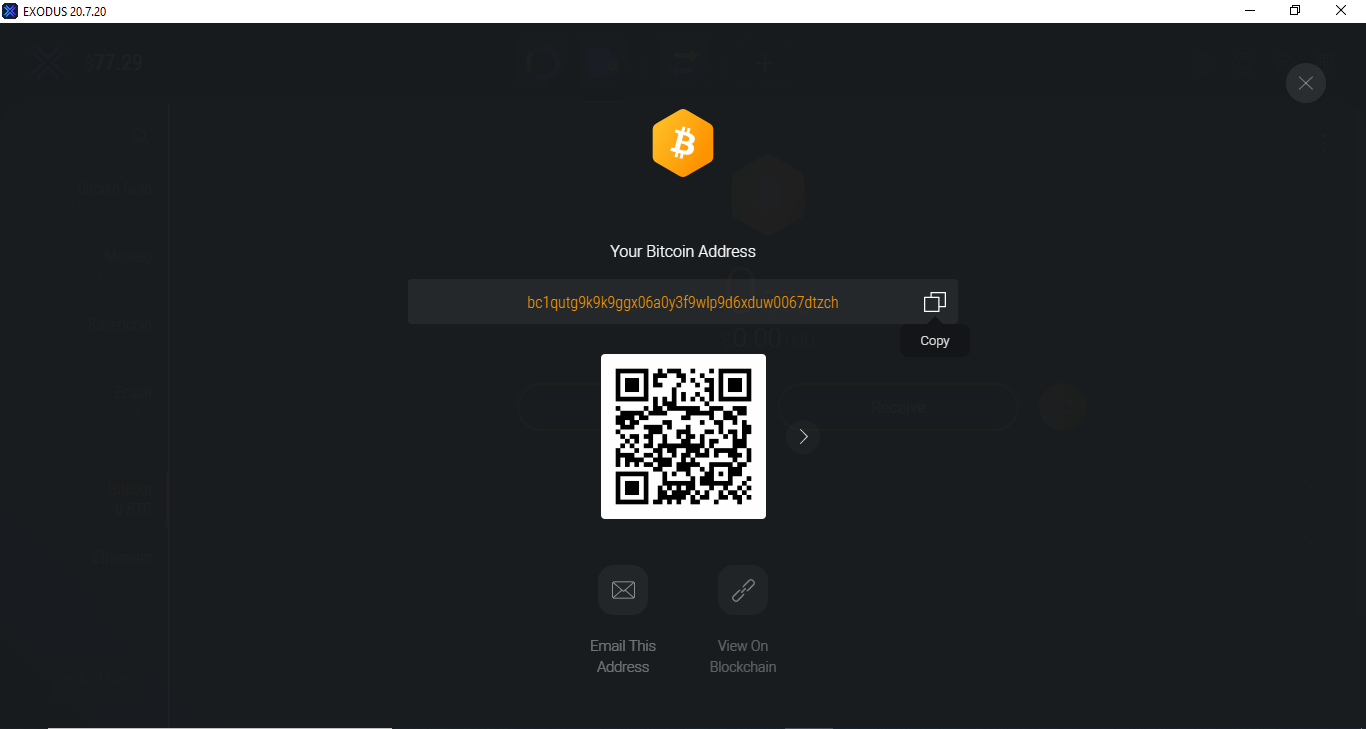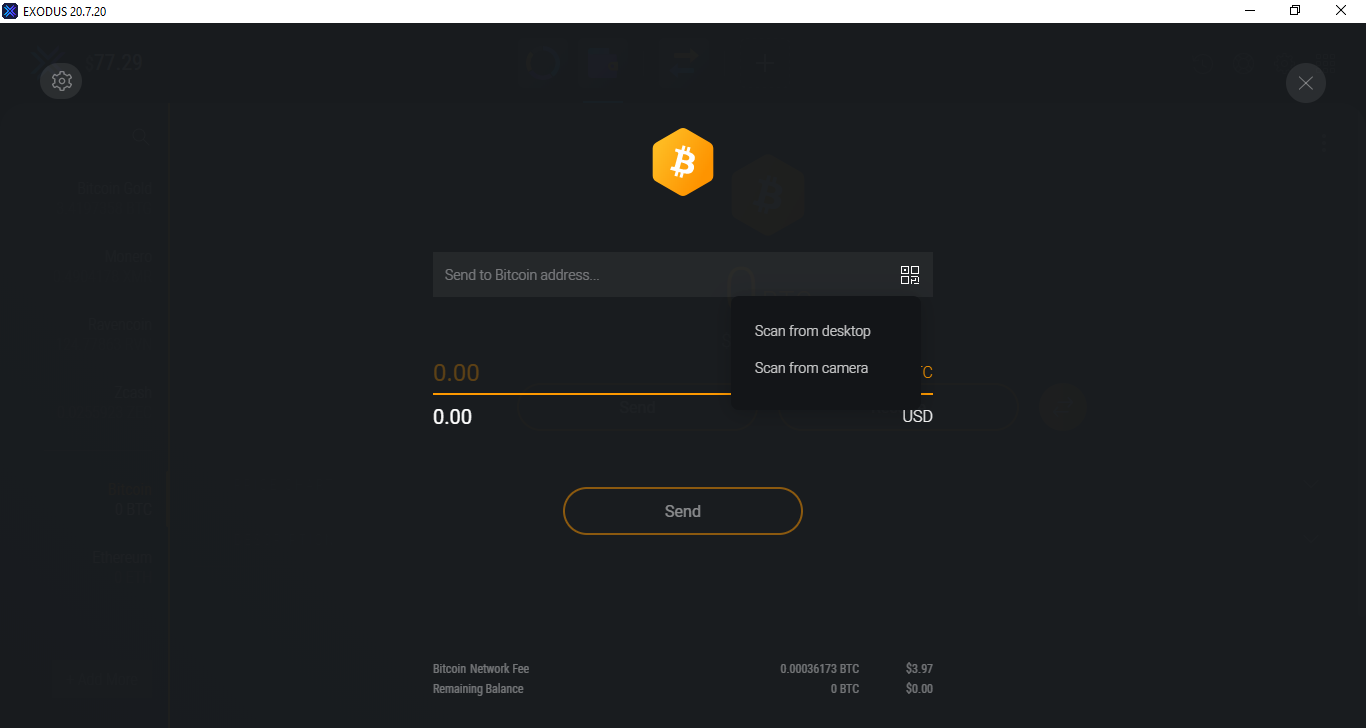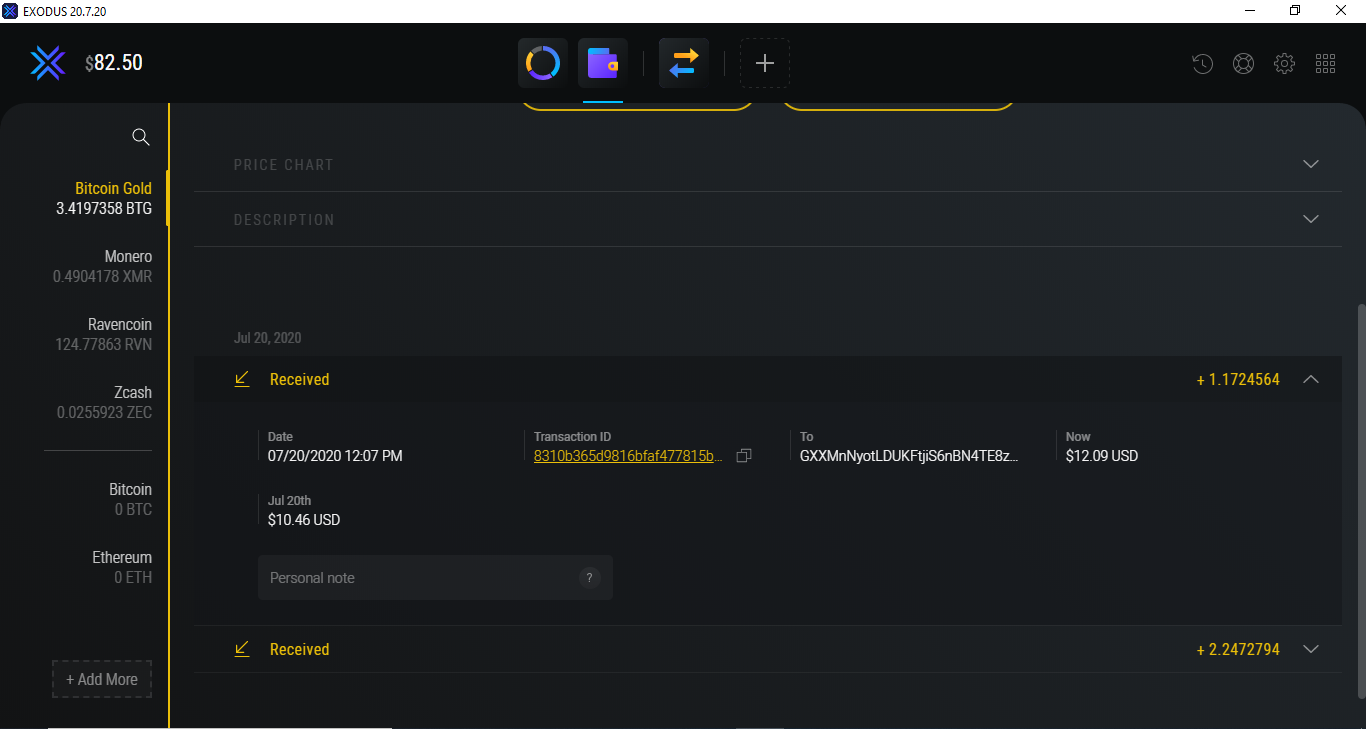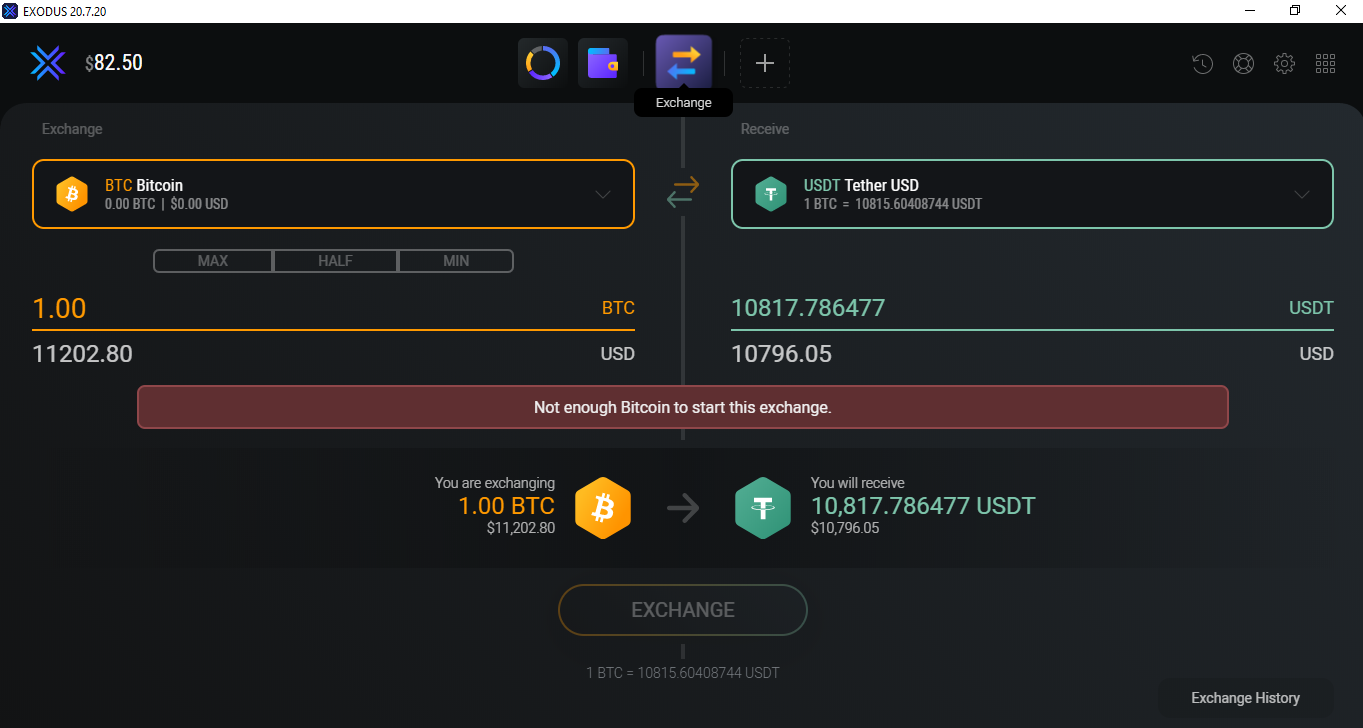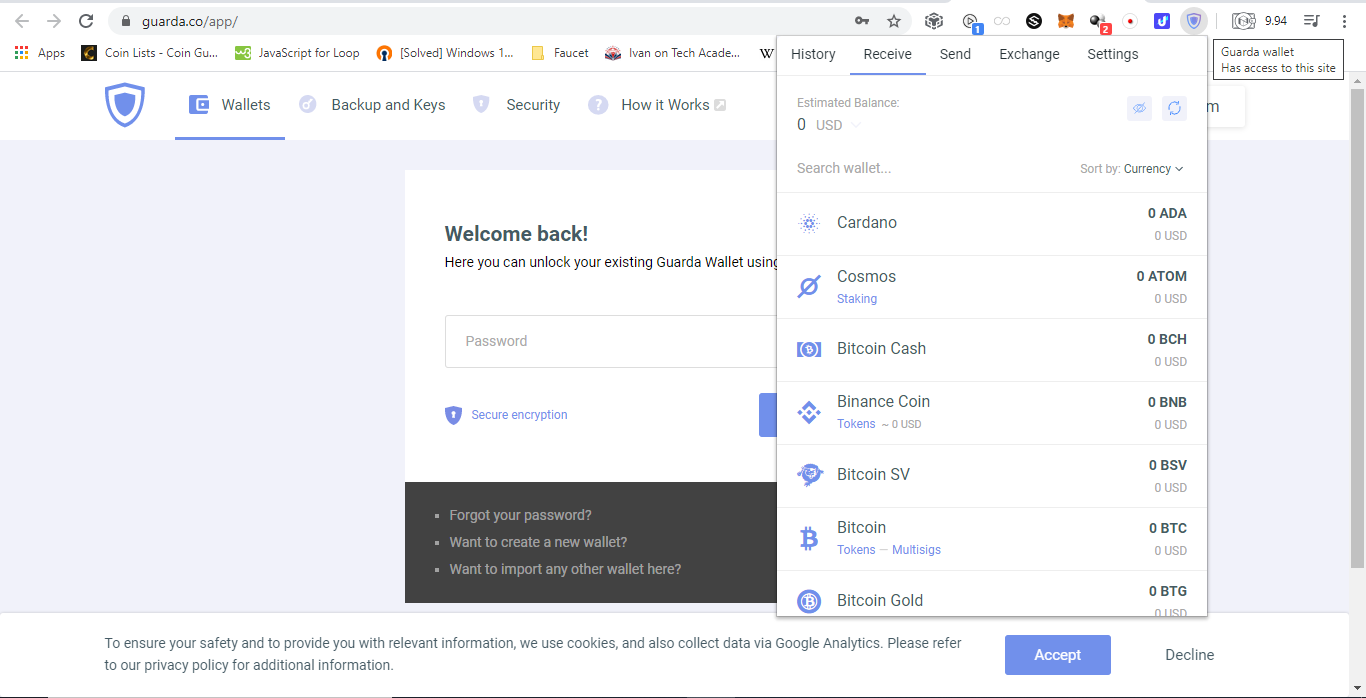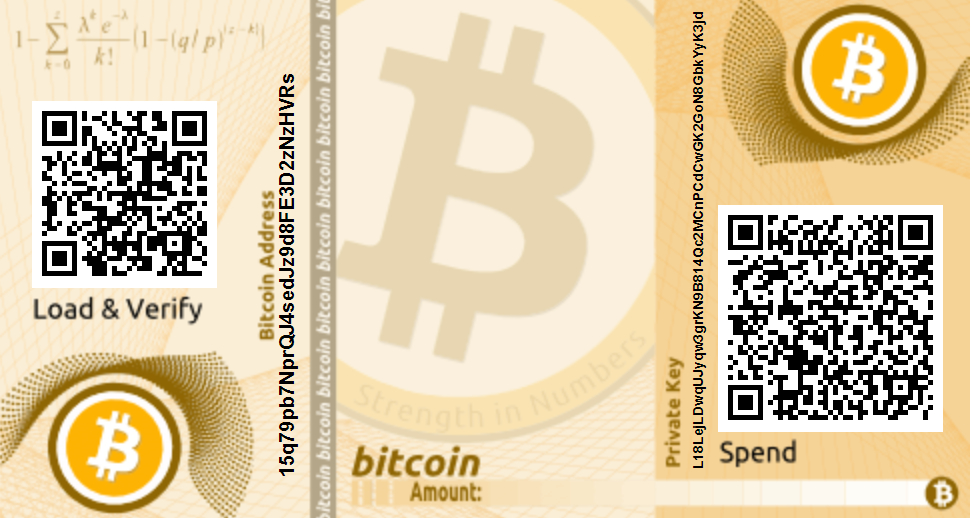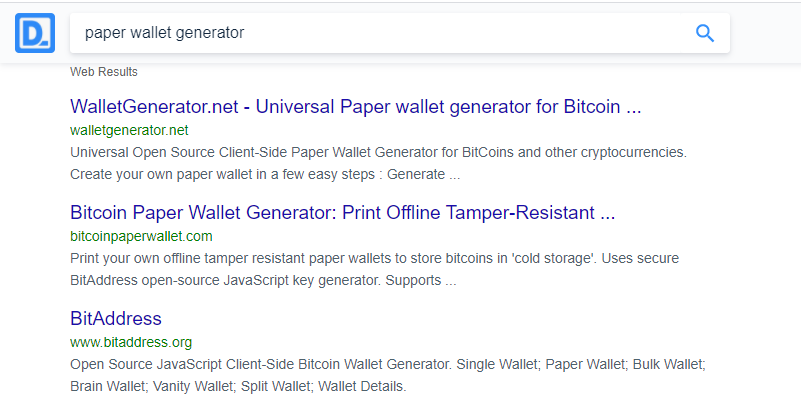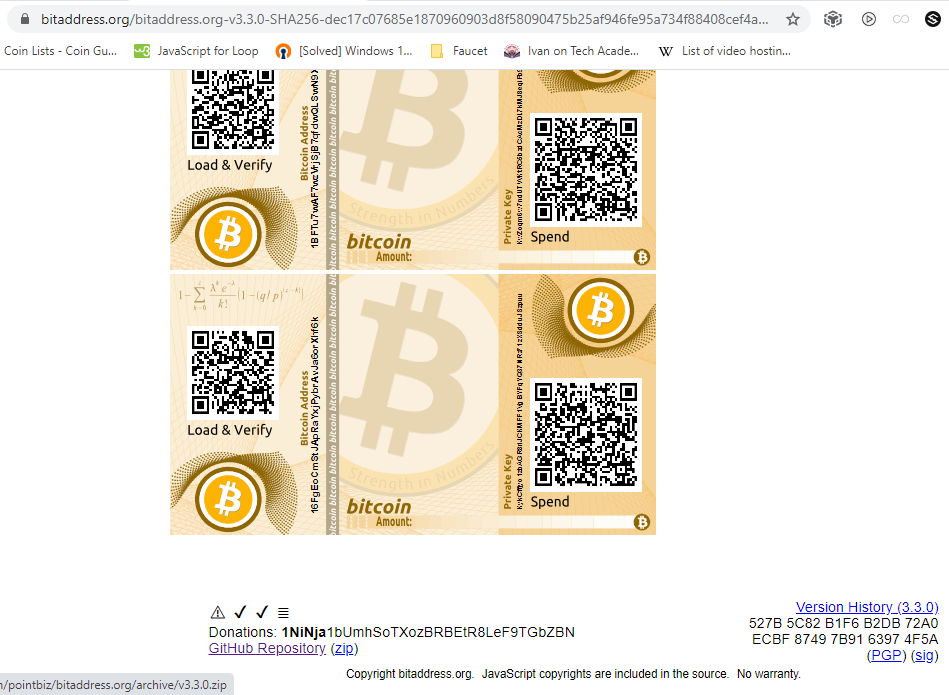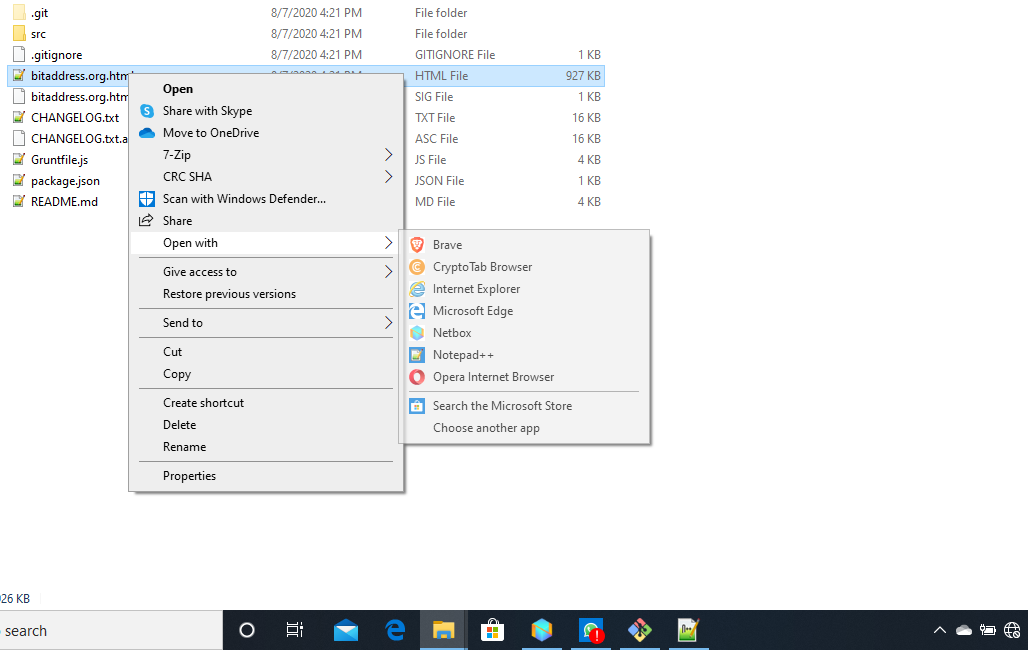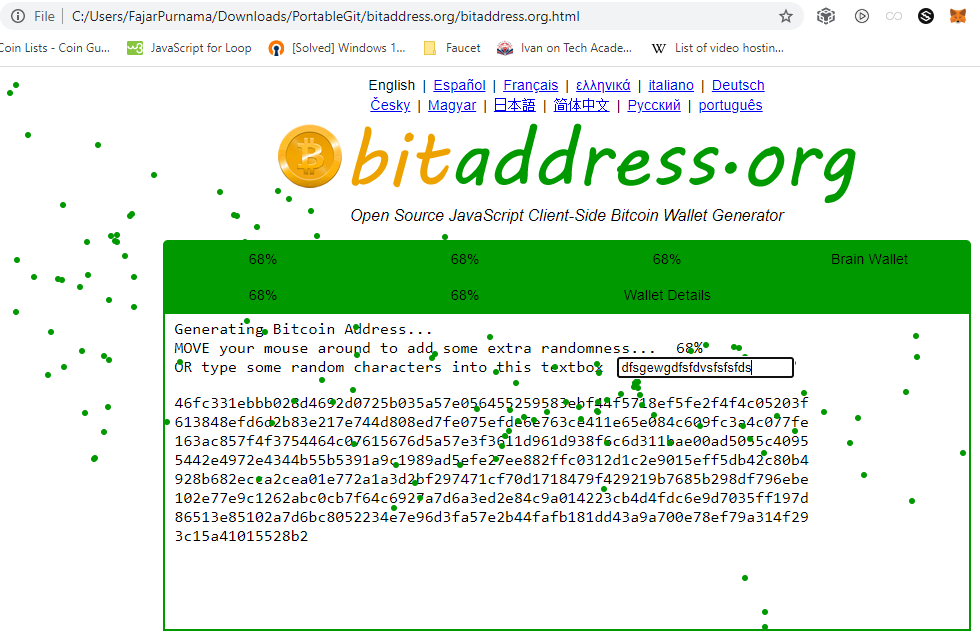Cryptocurrency 101 for Users Chapter 2 Entering The Space
Table of Contents
- Enter With a Wallet
- Custodial Wallet
- Semi-Custodial Wallet
- Non-Custodial Wallet
- Hot Wallet
- Cold Wallet
- Getting Your First Coin
Enter With a Wallet
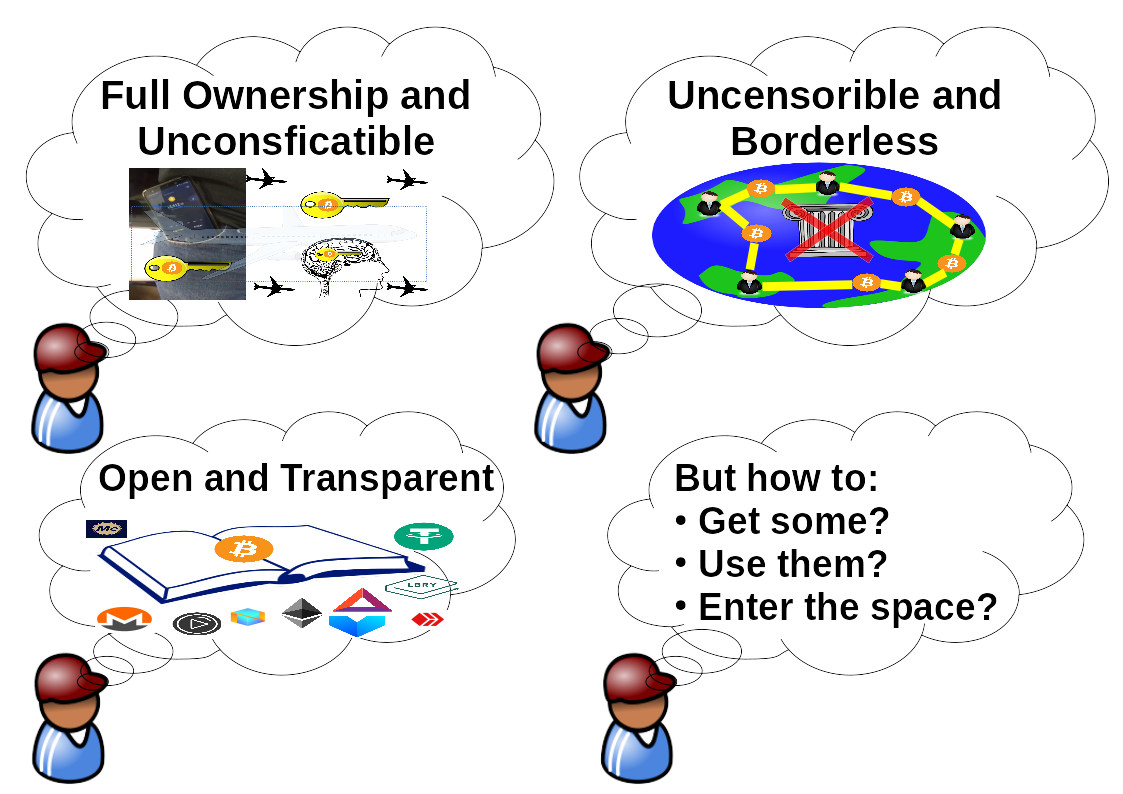
You may have been regularly following the news and you may have been diligently following the price. A funny story from a student of Ivan on Tech Academy, that student learned how to program smart contracts and other cryptocurrency related technology but do not know how to buy coins, receive coins, send coins, and use coins. This chapter will guide you of how to enter cryptocurrency space.
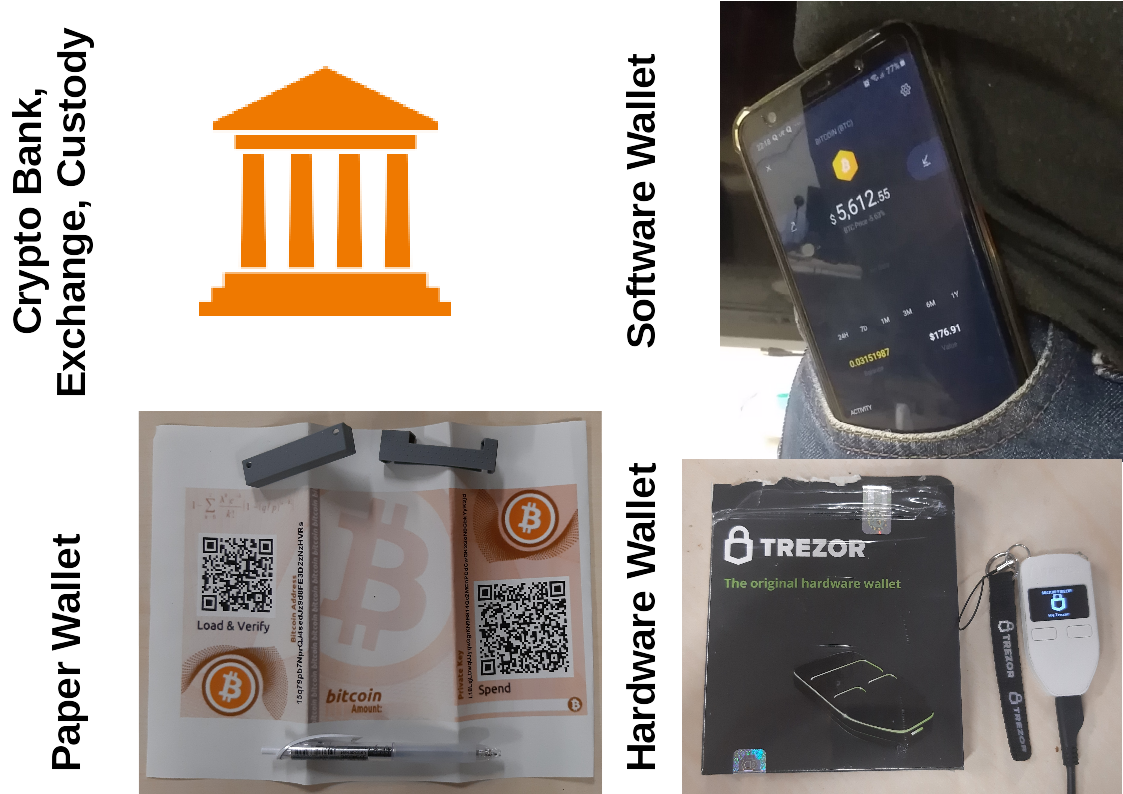
To enter the cryptocurrency space, you need a medium that can receive, send, and perform other interactions with those coins. A simple medium is called a cryptocurrency wallet which you can carry to anywhere in the world. The first category division of a wallet is divided into three either custodial, semi-custodial or non-custodial.
Custodial Wallet
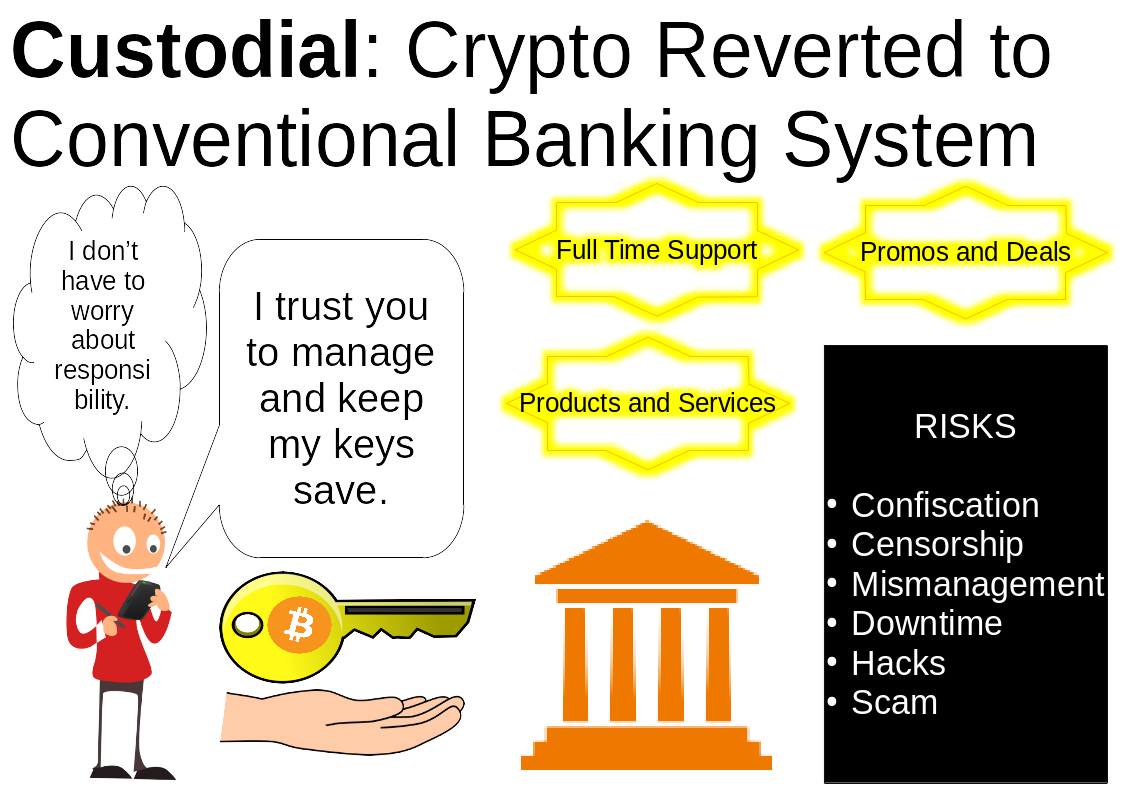
A custodial wallet is basically cryptocurrency served to be as similar as the current banking system. You do not want to hold the responsibility of securing your own coins. Therefore, you store your coins into a cryptocurrency bank and trust the bank to secure your coins. Another reason why starters prefer custodial wallets is because of the support. When the user have problems with the interface, exchanging, depositing, withdrawing, and even when they lose their password, the support can help them. When anything goes wrong, the users can even blame the support and may even get refunds. A good custodial cryptocurrency bank for starter is Coinbase. Not only they try to make it as simple as possible for you but educate you as well so that one day you are ready to handle non-custodial wallets.
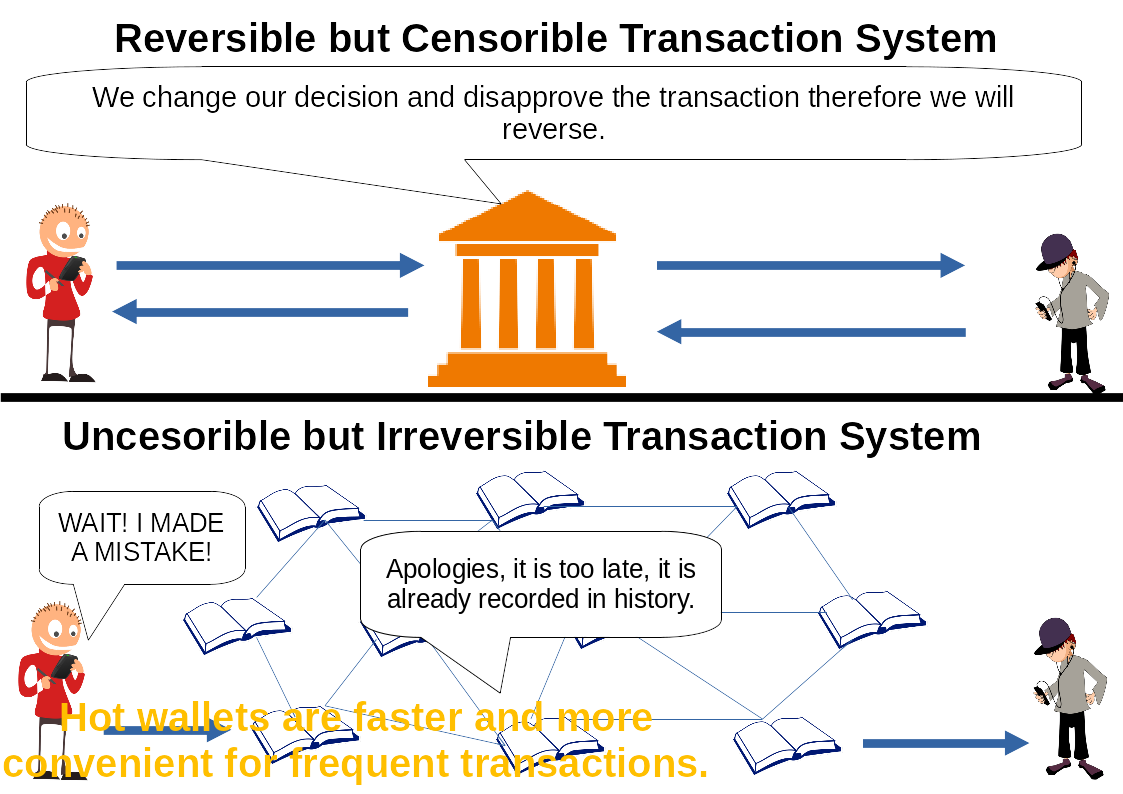
One user feature that remains the same in custodial wallet is the users’ perspectives transaction mechanism or the send and receive coin function. The transaction process remains irreversible where if you input the wrong address even with the smallest typo, you will lose those coins forever. That applies when to transactions between the custodial wallet and the outside wallet while for internal custodial wallet, they can fix your mistake because it is internally controlled. In the past, custodial wallets always gives warning about to be careful when typing an address before sending or receiving while non-custodial wallets does not give warnings at all where starters are often lose their funds because they are not careful when typing addresses. Some custodial wallet have an advance feature of detecting address typos.
Semi-Custodial Wallet
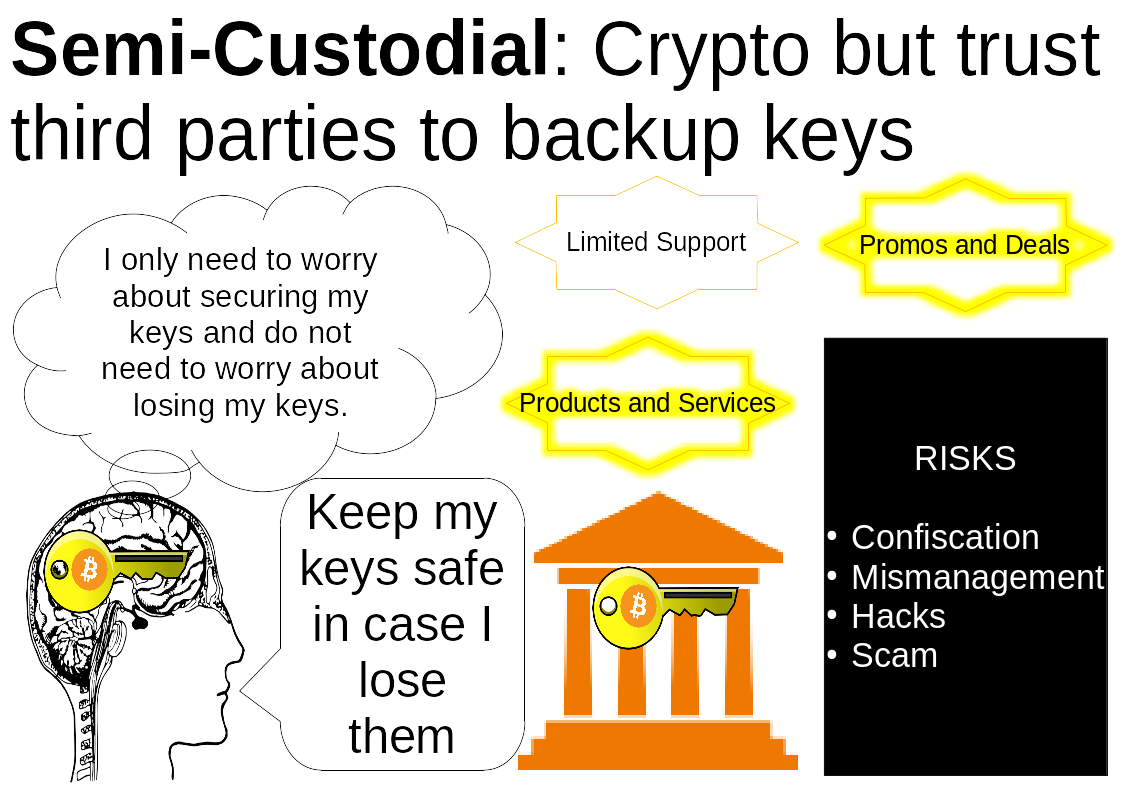
A semi-custodial wallet is wallet where both you and the third party have the keys to your funds. The purpose is to ensure that you can recover your keys whenever you lose them while at the same time trusting the third party to secure your keys and not be irresponsible with your funds. For now, I only know one type and that is a web wallet where you open a website which is a wallet service where you can register, input your username and password to use the wallet but they also let you have the keys. However, the semi-custodial that I described I cannot find or have not existed yet. The current semi-custodial wallet method that I know is where the third party stores only the encrypted keys and needs your password to decrypt them. They do not store your password where if you forget your password, the keys are the only way to restore your funds. They called this, hybrid wallet. There are also non-custodial web wallets where they just provide the interface to access your wallet sparing the necessity of installing a wallet application on your computer device. Usually, you need to import your keys everytime you open the web wallet to access your funds.
Non-Custodial Wallet
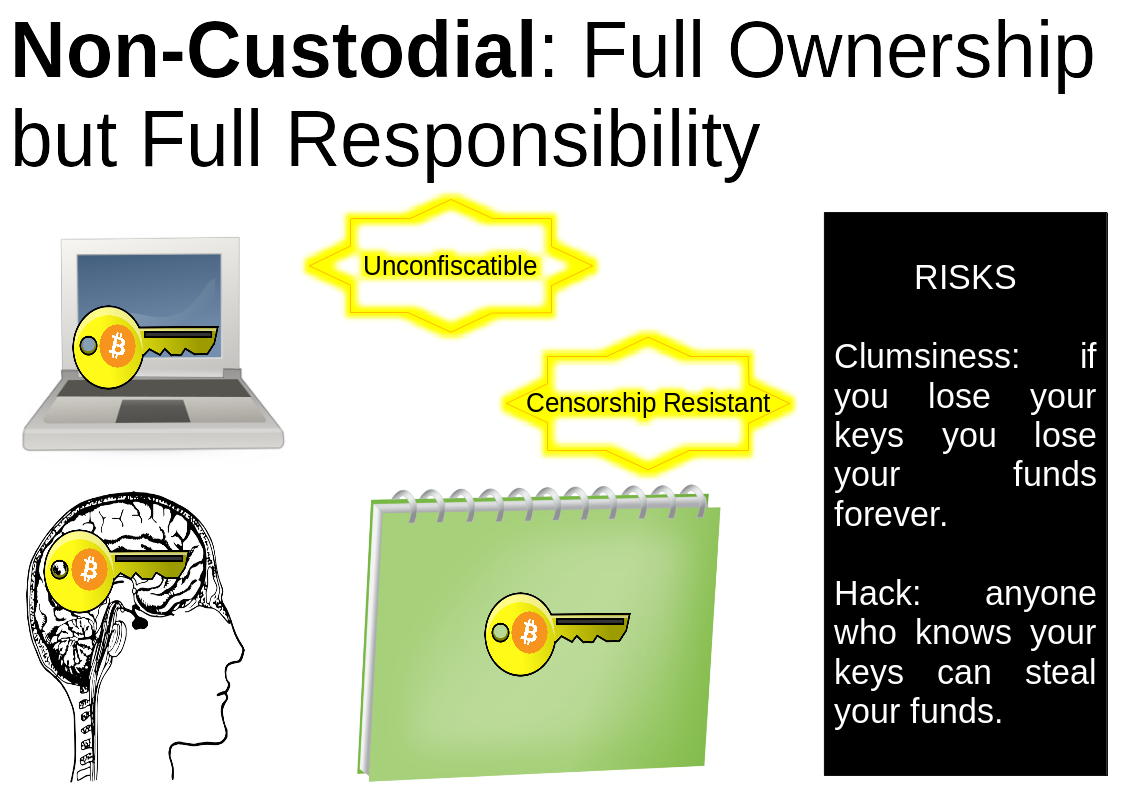
Non-custodial wallet is the original concept of cryptocurrency. While custodial wallet keeps your funds in the custody of third party, non-custodial wallet returns full authority and ownership to you. This concept was introduced because people are losing trust with third party where they act irresponsible to their customers’ funds. This concept is also for those who are in oppressive region where the authorities becomes tyrants, telling you what to do with your assets. With non-custodial wallet, the concept is no one other than you can access your funds that includes even the highest authority. Your funds are unconfiscateable and they have to torture you to get them. However, the responsibility is also to the max where you are solely responsible. If you lose your keys then you lose access to your funds forever or if you do not secure your keys well, someone can steal them and steal your funds.
Hot Wallet
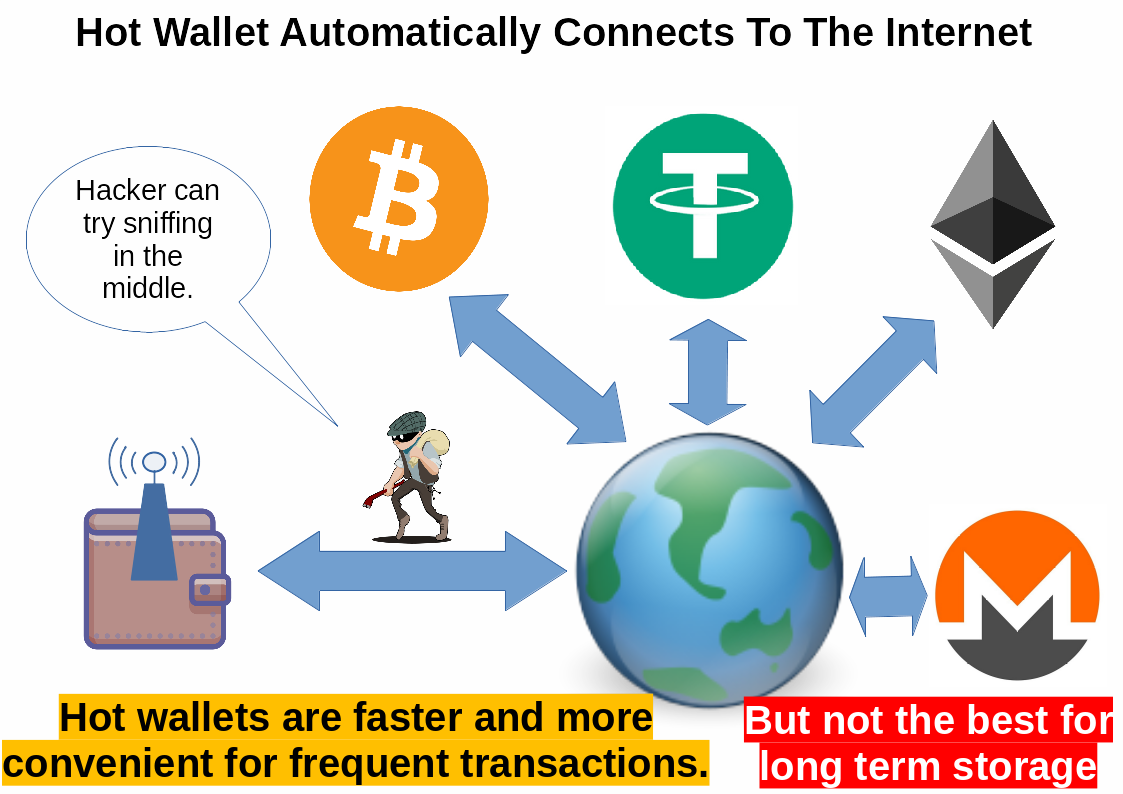
People often call this hot wallet which is a wallet that requires Internet connection to function. Well you can think of this as an online wallet although hot wallet is more appropriate because the keys are not stored online but should be safe with you and online usually refers to anything that is accessible on the world wide web (www) which is rarely the case for hot wallet. Yes, there are wallets where you can access online where the keyword is web wallet but most of the hot wallets are downloadable applications on your computer devices. For starters, I very recommend to try hot wallet first because it is user friendly and the reason why they require Internet connection is so that they can access, manage, and sort your funds faster. Also, I recommend Exodus wallet because it has a good user interface and support many coins and below is an example of using Exodus wallet:
Backup and Secure Seed Phrase and/or Private Keys
The first thing that you should do after creating a wallet is to backup and secure your seed phrase or private keys. The reason why you should backup them because if you lose them, you will lose access to your coins forever. The reason why you should secure them because if anyone knows them, they can steal your coins anytime. However once again from the previous chapter, the advantage is that you fully control your coins that no one even the authorities can confiscate as long as no one knows your seed phrase or private keys. To get your seed phrase in Exodus Wallet, find the backup menu. In the new version, you go to settings and choose the backup navigation menu.
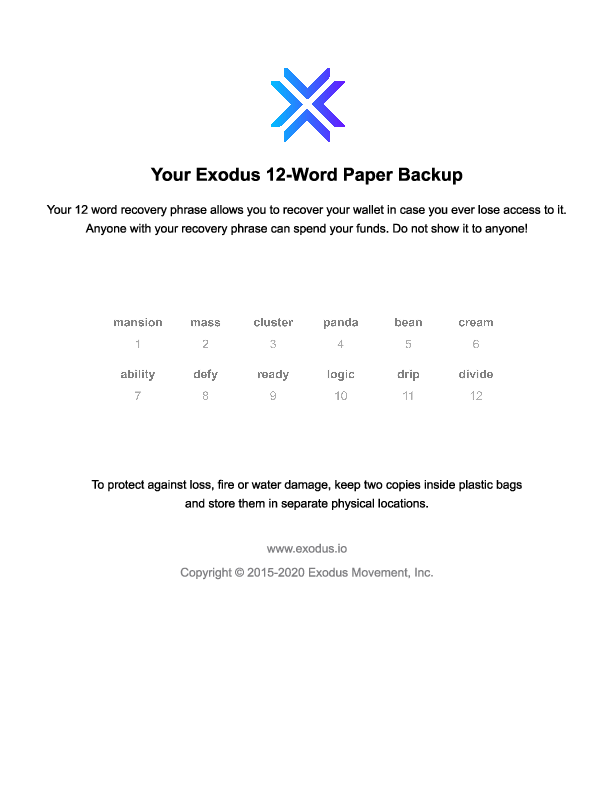
Usually you get few words, so write them on the paper or print them out and put them on your locker or vault or anywhere safe. You can also store them on your computer but beware of hacks, malwares, and virus that can steal that seed phrase. The best case is memorizing them and never forget because the brain is currently the best place to secure things. Warning, I showed the phrase here only for educational purpose and anyone can steal the fund in this wallet because I showed it in public. In fact, I once tried putting some coins and immediately they were sent to an unknown hacker’s address. Once your seed phrases or keys are leaked, immediately create another wallet, move all the coins, backup and secure the seed phrase and/or private keys, and abandon the leaked wallet. In the last part of the video, I demonstrated how coins can be stolen if the keys are leaked.
If you need the private keys of each coin address rather than the whole seed phrase then go to home, then wallet, click the desired coin, go to top right menu, and export private key.
Once you got your seed phrase and/or private keys, you don’t need to worry about you computer device being broken because you import the keys into other devices and access your coins.
Sending and Receiving Coins
The other basic function is the sending and receiving coin function. Go to the desired coin and find receive button or downward arrow icon for receiving coins or find send button or upward arrow icon for sending coins, and click. If your desired coin is not on the list then click the plus (+) button or go to settings and find assets to add your coin to the list. If you still cannot find it, then you need a different wallet, search on Google for a wallet of your desired coin.
For receiving, you can find your public address in form of complicated characters which are these characters that you need to share to receive a coin. Here, you are provided with a clipboard function for copying and pasting the address and a QR which you can choose one or use both them. Those functions are there to prevent human errors in sharing the address because one character mistake can result in coins to be lost forever since transactions are irreversible, also if you share the wrong coin address (for example the sender wants to send you Ethereum coins but you share your Bitcoin address) will also result in coins to be lost forever. Always double check, even triple check is recommended. There are many places to share your address such as your blog, social media, for donation, and you can print it out put in on your store to receive payments.
For sending coin, put the payee’s public address on the address section. Again use copy&paste or QR code and double check to prevent human errors and phisings because transactions are irreversible where you should also carefully check the amount like not make a mistake like putting an extra zero. Usually, you are charged with a network fee. Once you checked again and again, then send.
A transaction hash (TxID) should be generated where you check the status of transaction on any blockchain explorer of the respected coin. How wallets today are usually user friendly enough that you can click the TxID which will redirect you to the transaction status. This TxID is enough to be used as a receipt since it contains the details of the transaction. If your wallet is not user friendly enough, you can search on a search engine for example on Google you search for “Bitcoin blockchain explorer” and choose an explorer and insert the TxID on the search box.
Built-in Exchange
Some wallets have built-in exchange for you to exchange coins for example in this image shows exchanging BTC to USDT. This is a good function where very soon, all wallets will have built-in exchange.
Other Functions
The necessary functions of using a wallet have been discussed. Explore other function yourself. I may cover interesting functions in separate articles.
Other Hot Wallets Types
The Exodus wallet demonstrated in this book is a stand alone application installed wallet. There are other more convenient wallet but unfortunately today, the more the convenience, the more the security risk. Therefore, I do not recommend to store a large amount of fund here. Only use these wallets for trials and fast transactions. Another type of wallet is an extension or plugin wallet for example this image shows that I installed Guarda Wallet on my browser. If you are a browsing maniac where you are too lazy to install anything, then you can try web wallet where you just need to type the web address for example Guarda also have a web wallet at https://guarda.com/web-wallet. This is convenient for those who used full browser operating system such as Chrome OS. Ofcourse, since these are still non-custodial wallets, you still keep the keys.
Cold Wallet
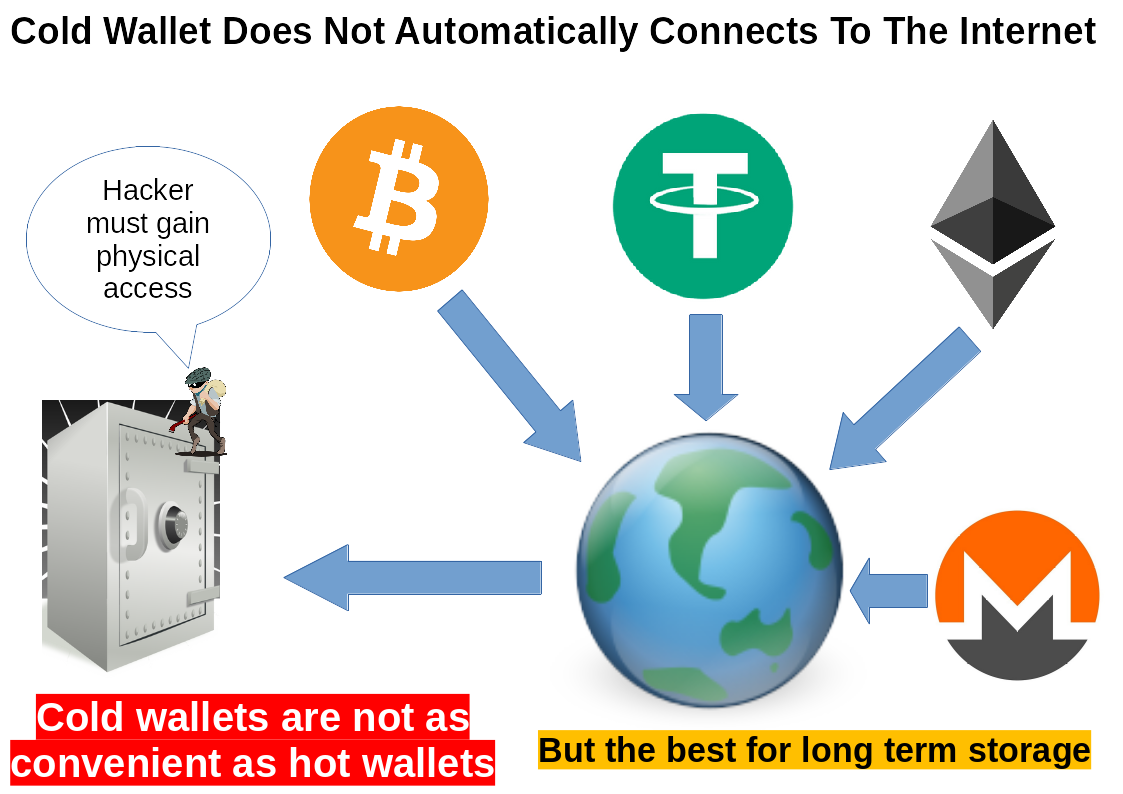
A cold wallet is a wallet that does not require Internet connection but more accurately, is wallet that keeps your keys offline. By keeping your keys offline mitigates the risks from online malicious activities which should be safer that hot wallet. This does not only apply to keys but to any digital data that you want to keep safe. An example wallet is Electrum which is a cold storage wallet where you can open it offline but if you are online in default connects to the Internet.
Paper Wallet
As the title of this subsection, a paper wallet is a wallet made out of paper. It contains your public address to receive coins and your keys to send coins. Well, I stated that the public address can just be shown on the cashier to accept cryptocurrency payment but how do you use the keys that are on the paper? You can have a one time smartphone application for example that scans the QR code of the key each time you want to send coins and after successful transaction, the key information on your smartphone is destroyed meaning that the key will not be stored on the smartphone. It necessarily does not have to be a computer device connected to the Internet, but anyway to connect to the network and use the keys to send the coins.
You can always study the theory and perform mathematical calculation yourself to generate a public address and a private key but this book will not be 101 for users anymore if that is the case. You can start by search on the search engine such as Google and Presearch about “paper wallet generator”. Extra, try to find more information about the website that you chose by reading them thoroughly, ask a trusted friend of yours, search whether they are scam or not, and try searching the social media.
After you chose a website, for example here I chose https://www.bitaddress.org which is the oldest paper wallet generator with no issues up to now. You can always just visit the site and save page as but the domain can change ownership where there is no guarantee whether the owner is not a malicious. Therefore, I suggest to open the link to their source code https://github.com/pointbiz/bitaddress.org and download the .html file or the whole code there.
Turn off your Internet connection and open the .html file using a browser where I recommend you do it incognito. For starting users convenience, I demonstrate in Windows but if you want stronger security, I suggest to do it in fresh Ubuntu live or even better Tails Portable Operating System or anywhere that you think is free of malware.
Randomly hover, click, scroll the mouse, and type in the text box to generate a random address. The more random your action, the better. Choose paper wallet, and print. If you don’t like the default print, then you can just save image as and redesign yourself. If you want a brain wallet instead where you want to generate using your own passphrase, there is a menu.
Hardware Wallet
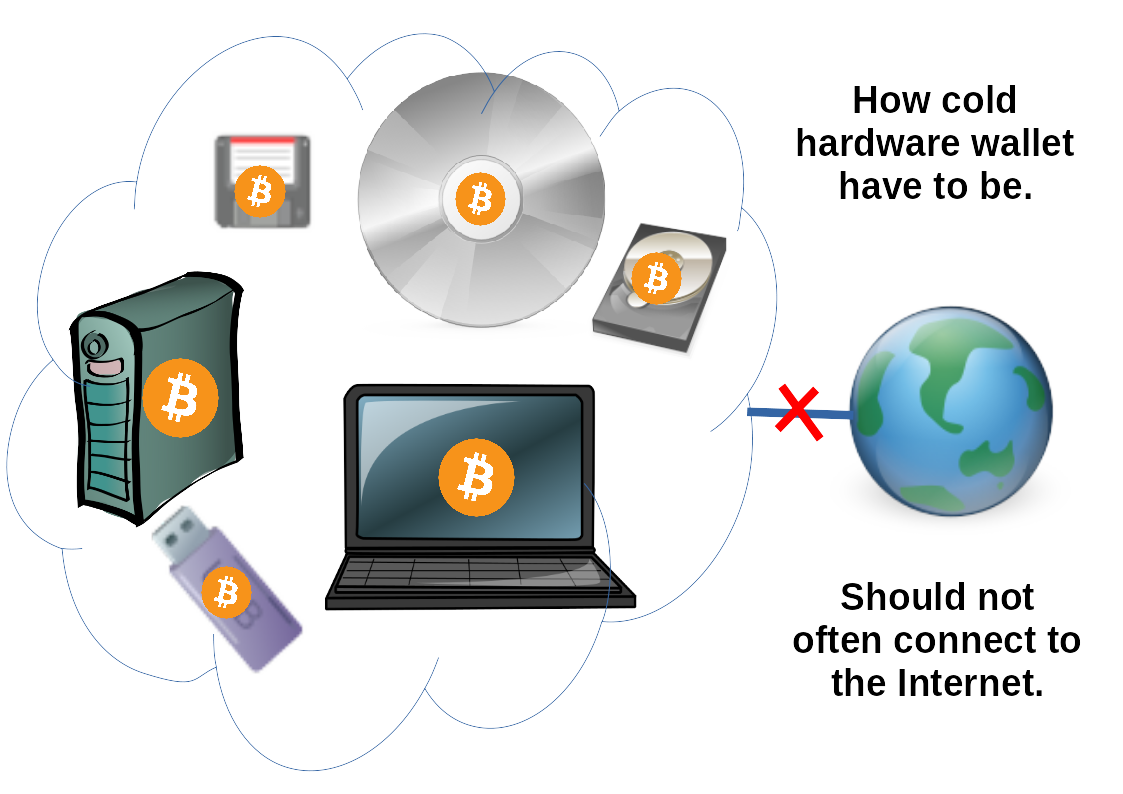
Let us be realistic, there will be few times in a lifetime that you will often take out your paper wallet and the more often you do that, the more riskier it is. The personal risk of paper wallet is the fragility where it can be damaged or lost. For example, getting rip in an accident and just getting wet a bit may damage the paper. Once it is lost, your coins are unaccessible ideally forever. So, you may rely on electronic storage media to reduce this risk. You can have a hard drive, usb drive, SD card, diskets, or even a whole computer device to store your keys but the important thing is to keep them clean and offline.
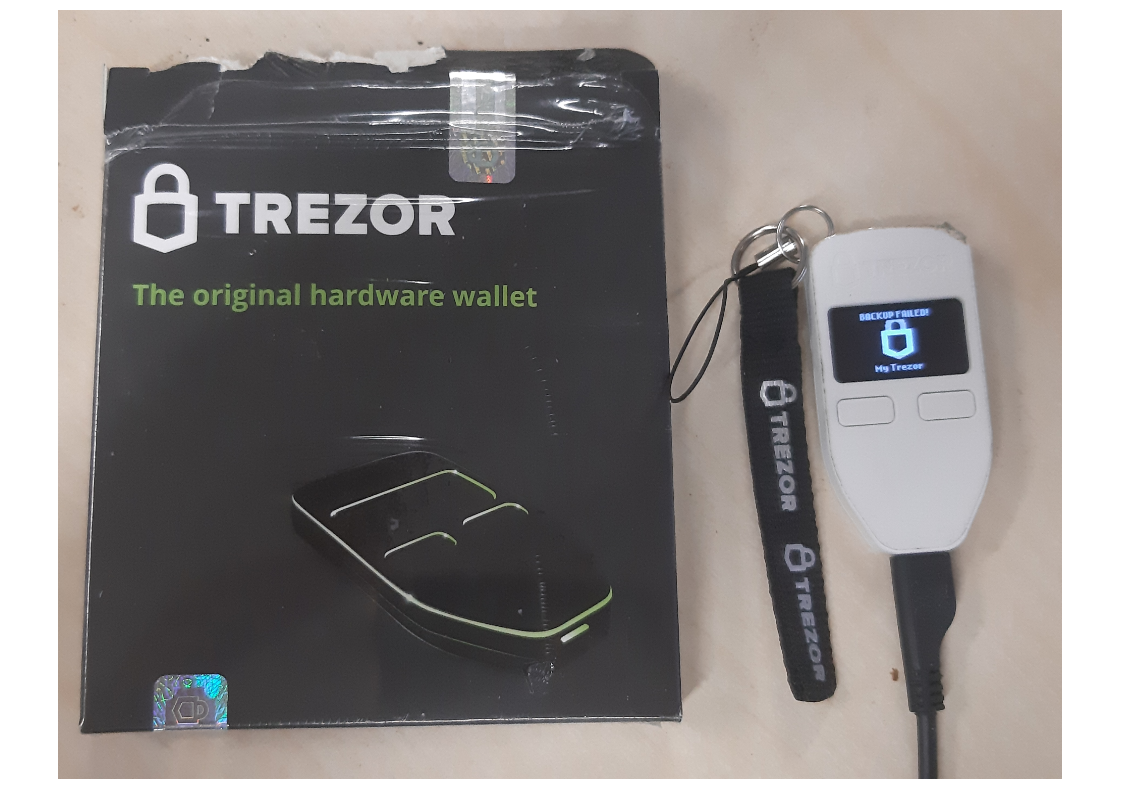
Though you can always store your keys or just install the wallets on a USB (universal serial bus) drive, today there are smarter USB devices specifically for cryptocurrency storage called hardware wallet. The first commercial hardware wallet is Ledger Nano but you can get a cheaper one as cheap as $50 called Trezor which I decided to have as my first hardware wallet. While paper wallet is very long term storage, hardware wallet is still practical enough to be used for frequent transaction but still I recommend using hot wallets for high frequency trading.

After turning on your hardware wallet, you can import existing wallets using your seed phrase. If this is your first hardware wallet, I recommend you to make a new one and dedicate as another place to safely hold your coins. Backup and secure the keys and set a lock pin. Then connect the hardware wallet to the computer.
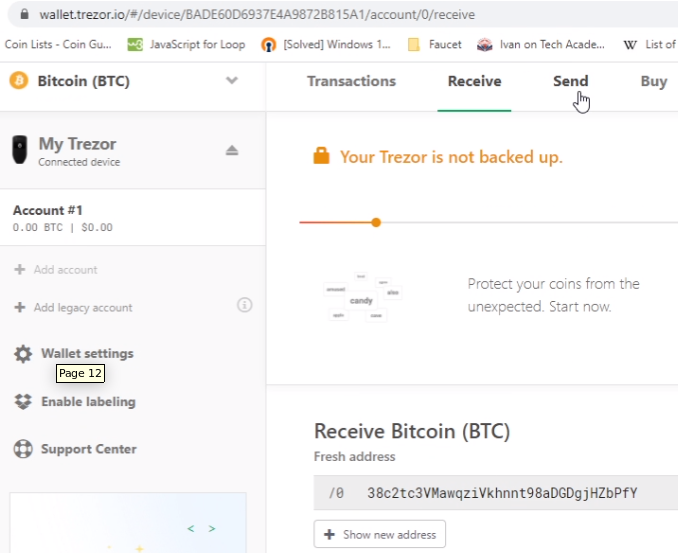
For example using Trezor, install the bridge driver if necessary. Currently, you can manage your wallet by opening a browser with and visit https://wallet.trezor.io/. I’m not sure whether you can save page as and open it offline but they provide a manual if you want to install your webserver to access your wallet online or locally at https://wiki.trezor.io/User_manual. Trezor also plans to integrate with other application, do check, for example it is available for integration in Exodus and Binance DEX
Getting Your First Coin
Now that you have medium to receive your coins whether through custodial wallet, non-custodial wallet, hot wallet, cold wallet, or multiple of them, you are ready to fill them with coins. There are only three ways to get coins which are transacting with someone, mining, and creating one by becoming a developer who invent your own coin. In this section is recommended for new users get coins directly from someone. If you want to get them using your bank account, skip to the next chapter, if you want to mine, skip to later chapter, and if you want to become a developer skip to the next book. Finally the last message in this section is to get yourself some cryptocurrency in order to participate in the ecosystem because without them, your options are limited. Start with something small or more accurately, an amount you are willing to lose or an amount you are comfortable with because if you go in big out of greed expecting to get rich quick, your mentality may not be able to handle it because the market is very volatile where even if in the future the price will sky rocket but it may drop more than half first before that happens.
Coin ATMs
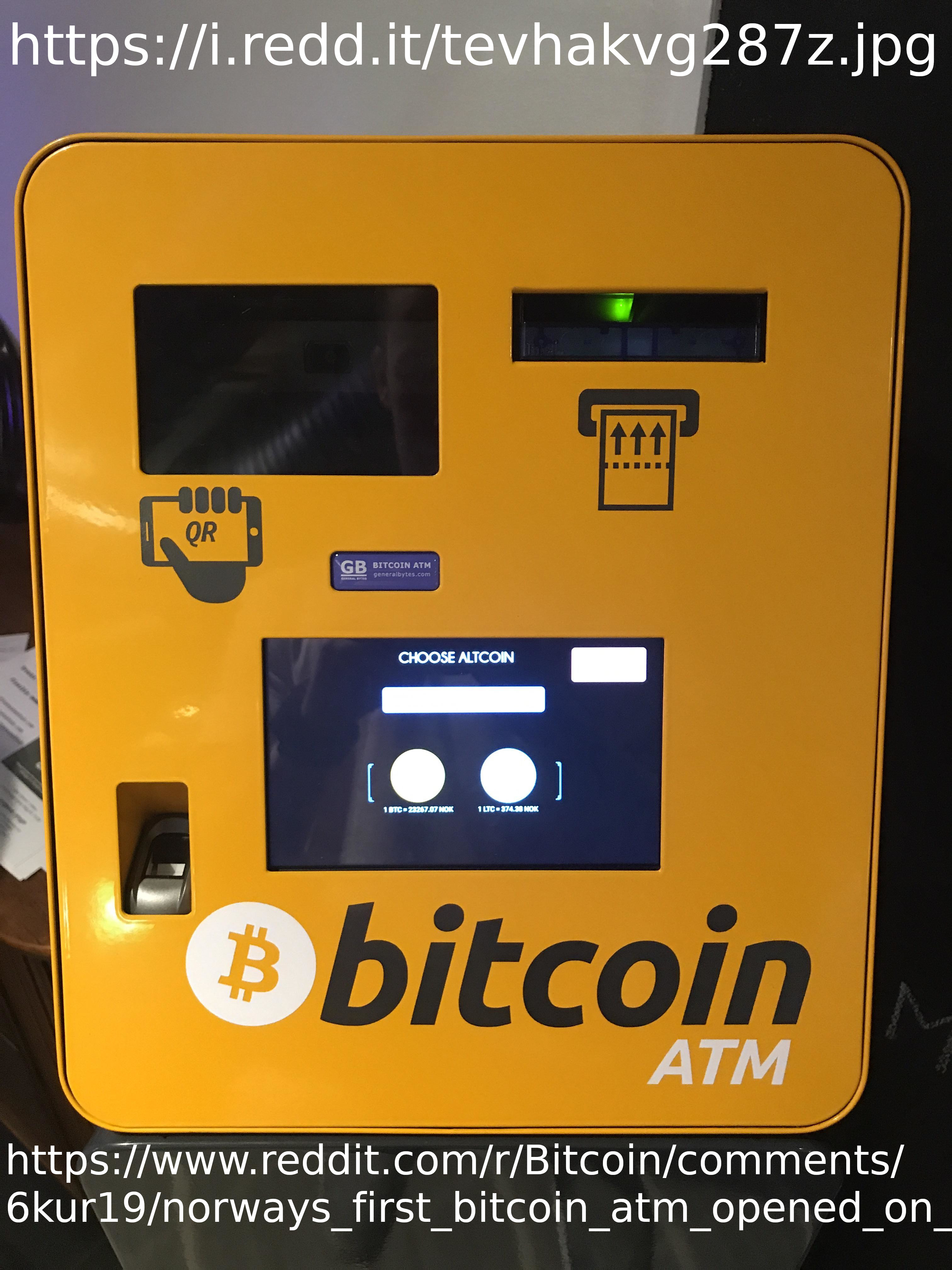
Getting coins from coin automated teller machines (ATM)s in popular areas is my first recommendation because there is no way that these machines escape the eyes of local regulators where you can almost guarantee their safety and security. Go to the search engine and type for example “crypto atm”, “bitcoin atm”, etc. I found a website called https://coinatmradar.com/ where you can check whether there are crypto ATMS near you. Bring some cash though I’m not sure whether you can use your bank card or not, and bring your public or receiving coin address. If this is your first time in cryptocurrency, do not forget that there are more coins other than Bitcoin and make sure you use the correct public address.
Buy From Someone Trustful
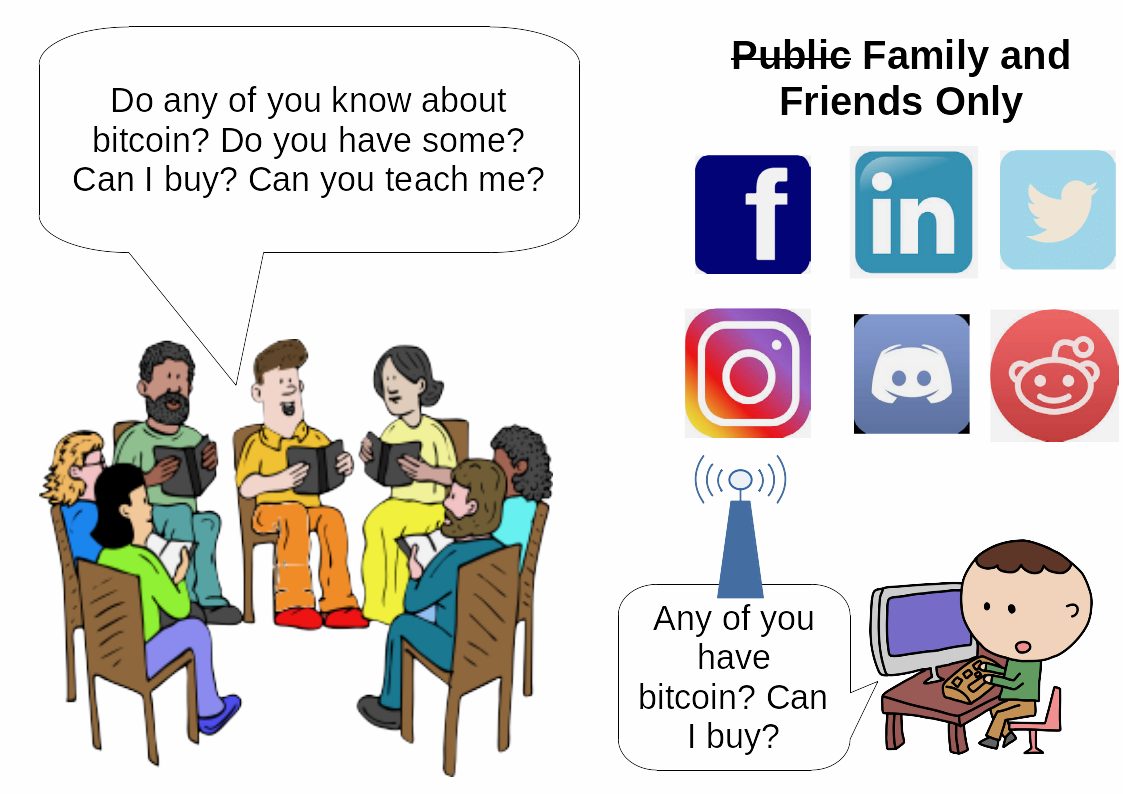
The next best option for starters to get cryptocurrency is to buy from people you trust. People in your circle should be your primary option. Ask your family and friends about cryptocurrency and ask to them to guide you to buy some. With information technologies nowadays, you have more options than contacting them one by one, for example you can post a status or broadcast a message in social media platform. However, only recommended with people you trust because you are new that anyone can easily scam you like selling you fake Bitcoins.
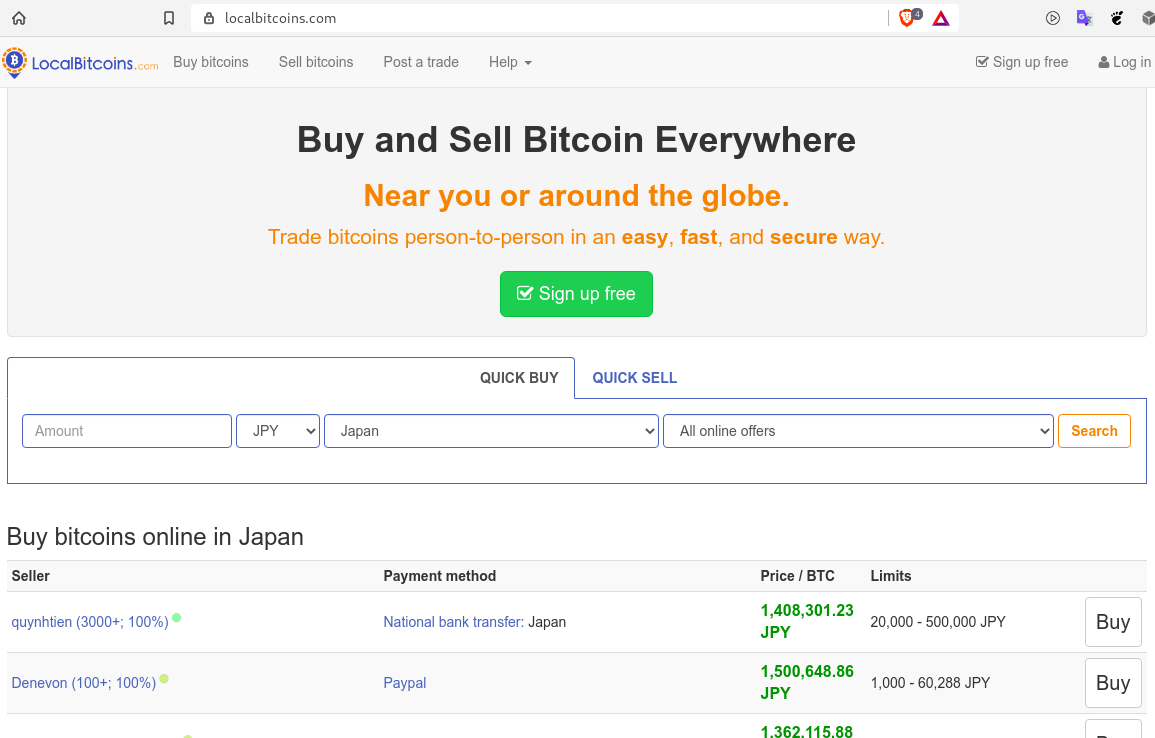
After you are knowledgeable enough like being able to identify fake coins, not sending money to people you cannot meet, and know the correct price in the global market, then I am confident in recommending you find other people. If you can find cryptocurrency community near you, that is great. If not, then there is https://localbitcoins.com/ that can help you lead to people near you who have Bitcoin.
Non-Custodial Credit Card Service
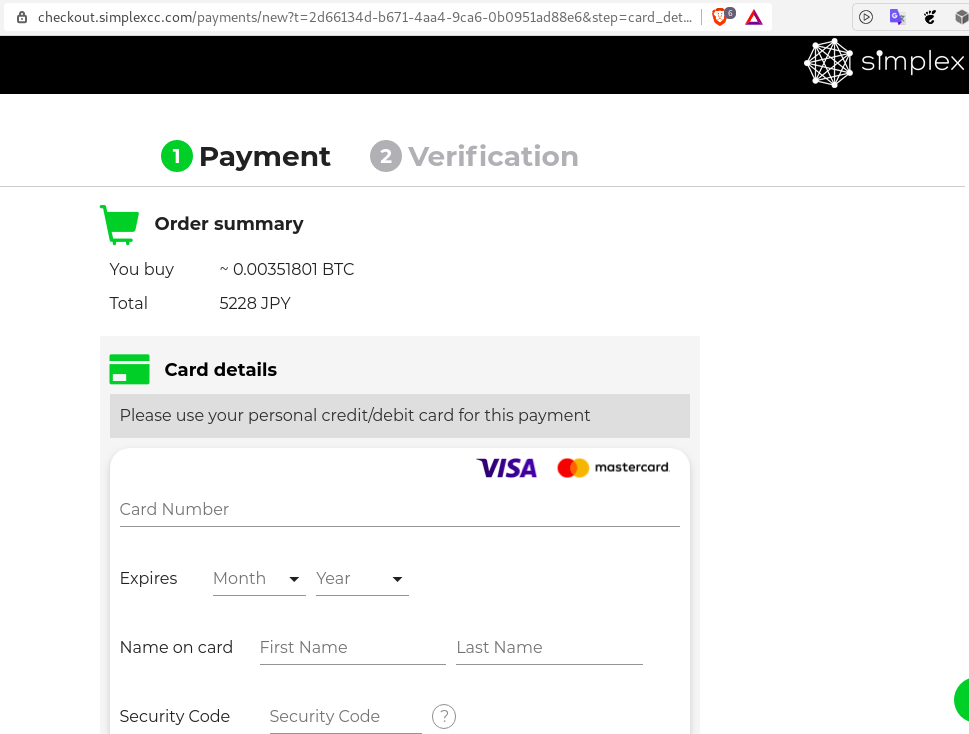
If you have a credit card, then there are convenient online non-custodial service you can use such as Simplex. All you need to do is give them your wallet public or receiving address. However, not all credit cards work for some reason and there are many people who does not have credit card.
Mirrors
- https://www.publish0x.com/cryptocurrency-101-for-users/cryptocurrency-101-for-users-chapter-2-entering-the-space-xqolvpw?a=4oeEw0Yb0B&tid=github
- https://0darkking0.blogspot.com/2020/09/cryptocurrency-101-for-users-chapter-2.html
- https://medium.com/@0fajarpurnama0/cryptocurrency-101-for-users-chapter-2-entering-the-space-7419c5651d67
- https://0fajarpurnama0.github.io/cryptocurrency/2020/09/19/cryptocurrency-101-chapter-2
- https://0fajarpurnama0.tumblr.com/post/629718823925432320/cryptocurrency-101-for-users-chapter-2-entering
- https://hicc.cs.kumamoto-u.ac.jp/~fajar/cryptocurrency/cryptocurrency-101-chapter-2.html
- https://steemit.com/cryptocurrency/@fajar.purnama/cryptocurrency-101-for-users-chapter-2-entering-the-space?r=fajar.purnama
- https://hive.blog/cryptocurrency/@fajar.purnama/cryptocurrency-101-for-users-chapter-2-entering-the-space?r=fajar.purnama
- https://0fajarpurnama0.wixsite.com/0fajarpurnama0/post/cryptocurrency-101-for-users-chapter-2-entering-the-space
- http://0fajarpurnama0.weebly.com/blog/cryptocurrency-101-for-users-chapter-2-entering-the-space
- https://0fajarpurnama0.cloudaccess.host/index.php/uncategorised/67-cryptocurrency-101-for-users-chapter-2-entering-the-space
